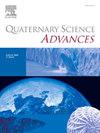Testing the reliability of geometric morphometric and computer vision methods to identify carnivore agency using Bi-Dimensional information
IF 2.2
Q2 GEOGRAPHY, PHYSICAL
引用次数: 0
Abstract
Bidimensional information of tooth marks and other bone surface modifications (BSM) presents limitations, as highlighted in this study. Here, we establish a methodological comparison on a controlled experimentally-derived set of BSM generated by four different types of carnivores, using geometric morphometric (GMM) and computer vision (CV) methods. We highlight that previous generalizations of high accuracy on tooth marks using GMM are heuristically incomplete, because only a small range of allometrically-conditioned tooth pits have been used. Biased replication and exclusion of the most widely represented forms of non-oval tooth pits from such analyses have compromised the published results and their ensuing generalizations. Here, we document bidimensionally a much wider range of tooth pits, using their outlines (and not a limited set of non-reproducible idem locus semi-landmarks), through Fourier analyses. The resulting tooth mark sets show low accuracy (and resolution) in the classification of tooth marks per carnivore modifying agent. This low resolution is also reproduced when using a semi-landmark approach. In contrast, our study demonstrates that CV approaches, through Deep Learning (DL), using convolutional neural networks (DCNN), and Few-Shot Learning (FSL) models, classify experimental tooth pits with 81% and 79.52% accuracy, respectively, being equally efficient at classification. However, a limitation in CV methods occurs when applied to the fossil record, as BSM undergo dynamic transformations over time. The most impactful processes occur early in taphonomic history, altering the original BSM properties. Consequently, no objective referents exist for marks combining original and subsequent diagenetically or biostratinomically modifying processes. However, in well-preserved contexts, such as the 1.8 Ma tooth marks from some of the Olduvai sites, confidence in interpretations can be high with convergent CV models indicating high agent attribution probability. While GMM shows potential in 3D, its current bidimensional application yields limited discriminant power (<40%). Thus, future research should utilize complete 3D topographical information for more complex GMM and CV analyses, potentially resolving current interpretive challenges. Despite necessary cautions, these new methods offer an unprecedented objective means of classifying BSM to taxon-specific agency with confidence indicators. Continued research should refine these approaches, enhancing the reliability of prehistoric interpretations.
检验几何形态计量学和计算机视觉方法利用二维信息识别食肉动物代理的可靠性
如本研究所强调的,牙印和其他骨表面修饰(BSM)的二维信息存在局限性。本文采用几何形态计量学(GMM)和计算机视觉(CV)方法,对四种不同类型食肉动物产生的一组对照实验衍生的BSM进行了方法学比较。我们强调,以前使用GMM对齿痕的高精度概括在启发式上是不完整的,因为只使用了一小部分异速条件牙凹。有偏见的复制和排除这些分析中最广泛代表的非椭圆形牙坑形式已经损害了已发表的结果及其随后的概括。在这里,我们通过傅里叶分析,使用它们的轮廓(而不是一组有限的不可复制的idem轨迹半地标),以二维方式记录了更广泛的牙坑。由此产生的牙印集在每个食肉动物改性剂的牙印分类中显示出较低的准确性(和分辨率)。当使用半地标方法时,也会再现这种低分辨率。相比之下,我们的研究表明,CV方法通过深度学习(DL),使用卷积神经网络(DCNN)和Few-Shot Learning (FSL)模型,分别以81%和79.52%的准确率对实验牙坑进行分类,分类效率相同。然而,CV方法在应用于化石记录时存在局限性,因为BSM会随着时间的推移发生动态变化。最具影响力的过程发生在地层学历史的早期,改变了原始的BSM属性。因此,没有客观的参照物来结合原始的和后来的成岩或生物层序改变过程的标记。然而,在保存完好的环境中,例如来自某些Olduvai遗址的1.8 Ma牙印,收敛CV模型的解释可信度很高,表明代理归因概率很高。虽然GMM在3D中显示出潜力,但其目前的二维应用产生了有限的判别能力(40%)。因此,未来的研究应该利用完整的三维地形信息进行更复杂的GMM和CV分析,从而潜在地解决当前的解释挑战。尽管有必要的谨慎,这些新方法提供了一种前所未有的客观方法,可以用置信度指标对BSM进行分类。继续研究应该完善这些方法,提高史前解释的可靠性。
本文章由计算机程序翻译,如有差异,请以英文原文为准。
求助全文
约1分钟内获得全文
求助全文
来源期刊

Quaternary Science Advances
Earth and Planetary Sciences-Earth-Surface Processes
CiteScore
4.00
自引率
13.30%
发文量
16
审稿时长
61 days
 求助内容:
求助内容: 应助结果提醒方式:
应助结果提醒方式:


